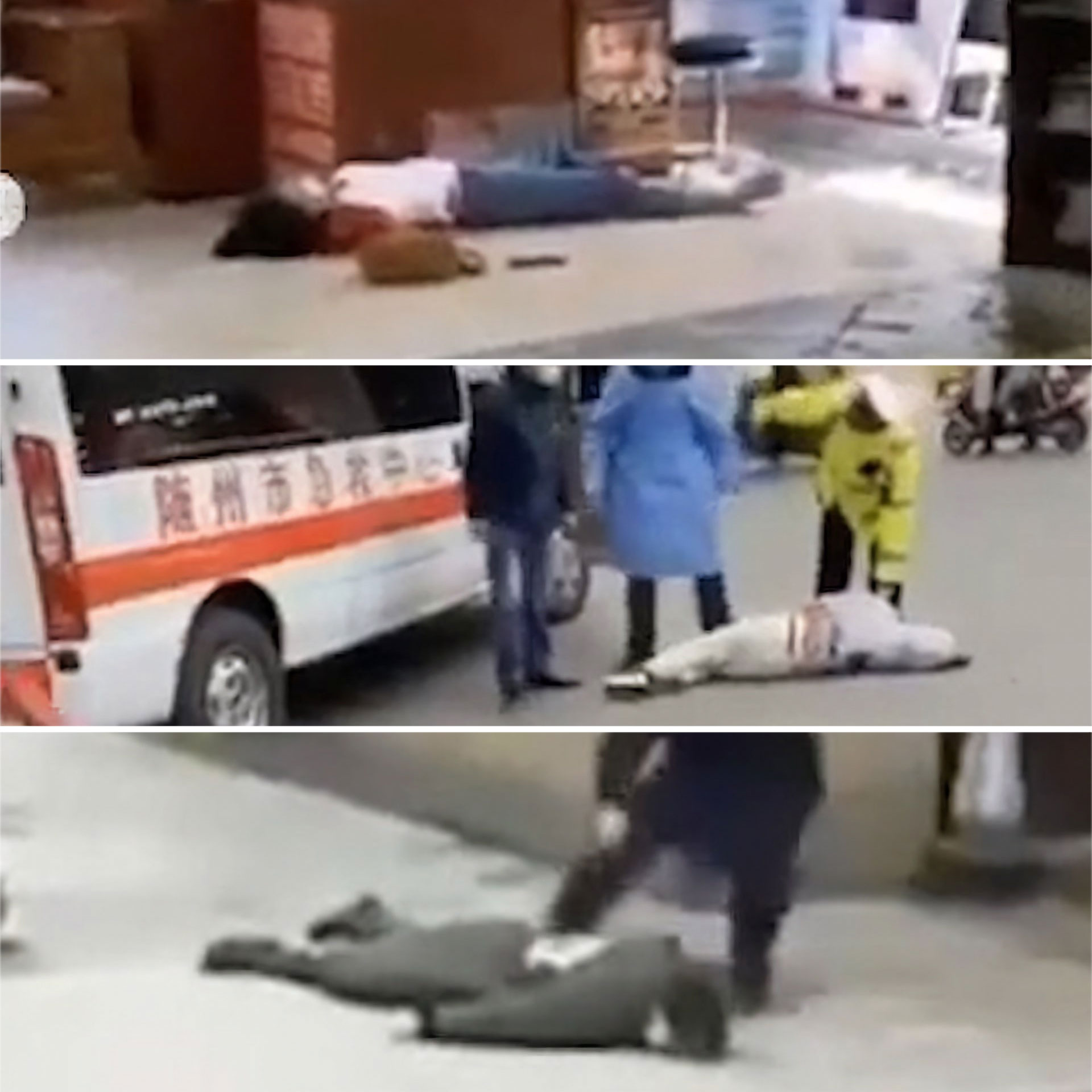The most striking finding is the deep and persistent partisan divide in how Americans view COVID-19. These divisions affect perceptions of the virus’ severity, the necessity of preventative measures, vaccine attitudes, and retrospective evaluations of pandemic responses.
- COVID-19 severity – A significant gap exists in how Republicans and Democrats perceive the current COVID-19 threat. About six in 10 Republicans say COVID-19 is now no worse than a cold or flu. By contrast, 76% of Democrats take the opposite view and describe COVID-19 today as worse than a cold or flu.
- Response seriousness – Fully 60% of Democrats worry we’re not taking COVID-19 seriously enough now, compared with 20% of Republicans.
- Preventative measures – Democrats are far more likely than Republicans to support preventative measures like mask-wearing and testing when experiencing cold-like symptoms. For example, six in 10 Democrats say it’s extremely or very important to wear a mask in crowded settings when people have cold-like symptoms, compared with 26% of Republicans who say this. Similar differences exist regarding COVID-19 testing.
- Vaccine views – Partisan gaps in vaccine uptake remain wide. About eight in 10 Republicans (81%) said they probably wouldn’t get an updated vaccine. By contrast, a majority of Democrats said they were planning to get it (39%) or had already received it (23%). Concerns about side effects and perceived need are major Republican reasons for vaccine hesitancy. The report also expresses concern that skepticism toward COVID-19 vaccines could impact views on other vaccines like MMR.
- Response evaluation – Republicans and Democrats also hold opposing views on how political leaders handled the pandemic. More than half of Republicans (59%) say Trump got the risks about right. By contrast, 81% of Democrats say Trump didn’t take the risks of COVID-19 seriously enough.
- Information confidence – Republicans are less confident than Democrats in their ability to find accurate information during a health emergency.
The lasting effects of the pandemic continue to reverberate in other notable areas.
COVID-19 Death Tally
Severe acute respiratory syndrome coronavirus 2 (SARS-CoV-2) caused the most significant global health crisis since the 1918 influenza outbreak, more popularly known as “the Spanish Flu.” The Spanish Flu killed 50 million people.
Officially, the number of deaths caused globally by COVID-19 stands at 7 million, while coronavirus cases reached a staggering 705 million around the world.
Accounting for excess mortality, the death rate above normal, 18.2 million people died worldwide from COVID-19. Excess deaths are defined as the number of persons who died from all causes in excess of the expected number of deaths for a given place and time to determine the degree to which observed numbers of deaths differ from historical norms.
In the U.S., modern healthcare, including three vaccines developed in record time, minimized COVID-19 mortality. According to the CDC, the official COVID-19 death count is 1,143,724. However, estimates of excess U.S. deaths from early 2020 to May 2023 range from 573,000 to 1.38 million. Based on these figures, it’s reasonable to estimate that the total number of U.S. pandemic deaths, including excess deaths, likely hovered between 1.7 and 2.5 million.
Shelter-in-Place
As the virus spread, governments worldwide implemented shelter-in-place or lockdown measures to curb transmission. These initiatives, aimed at reducing person-to-person contact, included closing non-essential businesses, restricting movement, and encouraging or mandating people to stay home. While these measures were crucial in slowing the virus’ spread, they also had significant economic and social repercussions.
Businesses faced unprecedented challenges, with many small enterprises closing permanently due to loss of revenue. The global economy experienced a severe downturn, leading to massive unemployment rates and financial insecurity for millions. On the social front, prolonged isolation took a toll on mental health, exacerbating conditions such as anxiety, depression, and loneliness.
Increased anxiety caused both violent crime and car accident fatalities to spike during the pandemic. Homicide rates peaked during the summer of 2020. Counterintuitively, despite a significant reduction in overall traffic due to lockdowns and work-from-home measures, traffic fatalities increased during the COVID-19 pandemic. Two factors contributed to this increase. With fewer cars on the road, some drivers engaged in more reckless behavior, including speeding. The pandemic also led to increased alcohol and drug use for some individuals, causing more impaired driving incidents.
Social Distancing
Alongside shelter-in-place initiatives, social distancing became a cornerstone of efforts to reduce virus transmission and a topic of late-night show humor. Social distancing involves maintaining physical space between individuals to prevent the spread of the virus, typically a minimum of six feet, usually indicated by floor stickers in public facilities. This measure was crucial in places where people congregate, such as grocery stores, public transport, and workplaces that remained operational.
Social distancing had a profound impact on social interactions and everyday activities. Public events, gatherings, and celebrations were canceled or postponed, fundamentally altering the fabric of social life. While effective in slowing the spread of the virus, these measures also contributed to the sense of isolation and disconnection experienced by many during the pandemic.
Work-From-Home (WFH)
One of the most profound changes brought about by the pandemic was the shift in work habits. Companies worldwide rapidly adopted work-from-home (WFH) policies to comply with shelter-in-place orders. Initially seen as a temporary solution, this change has had a lasting effect on work.
The widespread adoption of WFH led to a surge in the use of virtual meeting platforms like Zoom, Microsoft Teams, and Google Meet. Zoom’s daily participants exploded from 10 million to over 200 million in just three months during the early days of the pandemic. These tools became essential for maintaining business continuity, enabling employees to collaborate and communicate remotely. Virtual meetings replaced in-person conferences, and remote work became the norm for many industries. One year later, however, Zoom fatigue became a trend.
This shift had several implications:
- Increased flexibility – Employees experienced greater flexibility in managing their work-life balance, as they no longer had to commute to an office.
- Productivity gains – Some companies reported increased productivity, as employees could work in a more comfortable and controlled environment. As the novelty of WFH wore off, however, 40% of people who ran businesses began noticing decreases in productivity.
- Challenges – However, WFH also posed challenges, such as the blurring of work-life boundaries, feelings of isolation, and difficulties in team cohesion and communication. Apple CEO Tim Cook summed up the teamwork sentiment best: “Innovation isn’t always a planned activity. It’s bumping into each other over the course of the day and advancing an idea that you just had.”
A countervailing trend, dubbed “RTO’ or return to office, is taking hold, reflecting the growing tension between management and employees. In 2023, Apple began insisting that employees return to the office three days a week. At Amazon, CEO Andy Jassy titled his RTO message, “ strengthening our culture and teams.” The Wall Street Journal labeled the move a “messy push.”
Mask Resistance
Despite public health guidelines advocating mask-wearing to reduce virus transmission, there was significant resistance, particularly in the U.S. Mask mandates became a polarizing issue, with some viewing them as an infringement on personal freedom. This resistance, fueled by misinformation and political divisiveness, hindered efforts to control the virus’ spread.
The consequences of this resistance, coupled with the virus’ high transmissibility, were severe. The U.S. experienced the highest infection and death rates, with 112 million cases and 1.3 million deaths. That made the U.S. the hardest-hit country globally, far exceeding India’s 45 million cases, a country with more than four times the U.S. population. The strain on healthcare systems was immense, with hospitals overwhelmed and healthcare workers facing unprecedented stress and burnout.
SARS-CoV-2 Origin
It read like a new-age political science thriller involving a city few had ever heard of, Wuhan. One unusual characteristic of this city in central China was a lab facility that frequently conducted experiments with some of the most deadly pathogens in the world, many traceable to bats. Tellingly, the facility’s chief scientist was widely known as “Batwoman.” In December 2019, hundreds of Wuhan residents suddenly fell ill with a mysterious new virus, and people began dying.
To keep the disease from spreading, Wuhan was unceremoniously locked down on Thursday, January 23, 2020, at 2:00 p.m., but not before more than 3 million people fled the city, spreading the virus, then known as SARS-CoV-2, to unsuspecting citizens throughout China. The novel coronavirus was quickly renamed COVID-19 by the World Health Organization (WHO) to disassociate the affliction from SARS — a fast-moving deadly infection that shook the world in early 2003 — because it might cause too much “unnecessary fear,” especially in Asia.
It wasn’t the only attempt made to conceal the truth. A Russian-novel-sized cast of characters quickly stepped in to keep the virus a secret, despite thousands of Wuhan residents dying from an “unidentified form of viral pneumonia,” with some even dropping dead in public spaces, all faithfully captured by bystanders. Despite early efforts to contain the virus, COVID-19 quickly spread, facilitated by global travel and led to widespread illness, death, and profound societal changes.
 The images captured by city residents may be blurry, but the brutality of the COVID-19 pandemic in Wuhan was quite evident. This symptom suggested a virulent strain of SARS-CoV-2 was circulating in Wuhan. Why did people suddenly drop dead from the novel coronavirus in public Wuhan places, a phenomenon rarely witnessed outside Asia?
The images captured by city residents may be blurry, but the brutality of the COVID-19 pandemic in Wuhan was quite evident. This symptom suggested a virulent strain of SARS-CoV-2 was circulating in Wuhan. Why did people suddenly drop dead from the novel coronavirus in public Wuhan places, a phenomenon rarely witnessed outside Asia?
Coronaviruses are a large family of viruses known to cause illnesses ranging from the common cold to more severe diseases like Middle East Respiratory Syndrome (MERS) and Severe Acute Respiratory Syndrome (SARS). SARS-CoV-2, the virus responsible for COVID-19, was a novel strain not previously identified in humans and highly contagious. It primarily spreads through respiratory droplets when an infected person coughs, sneezes, or talks. The virus’ ability to spread asymptomatically — where infected individuals show no symptoms but can still transmit it — complicated containment efforts and contributed to its rapid global spread.
The outbreak was initially linked to the Huanan seafood market. Its emergence in Wuhan is widely blamed on zoonotic transmission, with the virus jumping from animals to humans, likely through an intermediary host such as bats or pangolins. Ministry of Science and Technology Director-General Wu Yuanbin (Chinese name order: last name followed by first) said the coronavirus was probably linked to wild animal consumption — “mostly likely” bats.
Here’s what’s known about the origin of the SARS-CoV-2 pandemic:
- Nature magazine warning – In February 2017, Nature, a London-based scientific publication, warned that the Wuhan Institute of Virology, China’s first Biosafety Level-4 laboratory certified to handle the world’s most dangerous pathogens, was prone to laboratory leaks:
“But worries surround the Chinese lab, too. The SARS virus has escaped from high-level containment facilities in Beijing multiple times.”— Nature 22-Feb-17
- Project DEFUSE – In March 2018, U.S.-based Peter Daszak, a frequent collaborator with Wuhan Institute of Virology researcher Shi Zhengli (“Batwoman”), submitted a proposal to DARPA entitled Project DEFUSE through his company, EcoHealth Alliance. The EcoHealth proposal, which assigns roles to frequent pathogen researchers Ralph Baric of the University of North Carolina and Shi Zhengli, describes in great detail the engineering of a virus resembling SARS-CoV-2.
- Initial infections – January 2020 research papers written by Wuhan physicians and sanctioned by the CCP report that four of the first five people who fell ill with SARS-CoV-2 had no connection to the Huanan Seafood Market. And what about those people who were suddenly falling down dead in Wuhan? In October 2003, a SARS coronavirus study conducted in Singapore observed a “sudden unexpected death” syndrome that affected two out of eight patients.
- RaTG13 – On February 3, 2020, Shi Zhengli co-authored a paper describing a 96% likely suspect bat reservoir that led to SARS-CoV-2. The Nature paper identified the sample as BatCoV RaTG13, which was previously found in a Rhinolophus affinis bat from Yunnan province. It took other scientists to ascertain that this “new virus” was actually a seven-year-old discovery dating back to 2013 called Bat CoV/4991. Shi’s five previous papers on bat coronaviruses published in 2013, 2016 (2), 2017, and 2018 identified a total of 365 bat coronavirus strains from Yunnan province, yet none of these publications mentioned this unique RaTG13 strain. It seems odd that a meticulous researcher like Shi Zhengli would entirely forget about RaBtCoV/4991, described in a study she designed herself just four years earlier.
- Huang Yanling – On Saturday, February 15, 2020, a rumor surfaced on Chinese social media that a Wuhan Institute of Virology graduate named Huang Yanling was the first person to be infected by the novel coronavirus. An even more explosive allegation was that a funeral worker at the crematorium where Huang’s body was disposed of was infected handling her corpse, causing the disease to spread throughout Wuhan. Institute officials claimed the rumor was untrue and that Huang had “left the city in 2015 and was in good health.” The institute then hamfistedly removed Huang’s profile image from its website, leaving an empty space for everyone to wonder about. There is far more intrigue that space does not permit mentioning here, so download Michael Tchong’s “LOCKDOWN: How the novel coronavirus escaped Wuhan, China and terrorized the world” book preview chapter for more details.
 The Wuhan Institute of Virology removed Huang Yanling’s profile photo from its website yet left her name followed by “2012 graduate student.” Her image appears to have been hastily deleted sometime after rumors surfaced suggesting that Huang had been infected at the Wuhan Institute of Virology and was “patient zero.” She has never been seen again since.
The Wuhan Institute of Virology removed Huang Yanling’s profile photo from its website yet left her name followed by “2012 graduate student.” Her image appears to have been hastily deleted sometime after rumors surfaced suggesting that Huang had been infected at the Wuhan Institute of Virology and was “patient zero.” She has never been seen again since.
- Subterfuge – The Chinese government has a well-established reputation for spreading disinformation. Robert Boxwell’s article in The South China Morning Post, “The blame game: the origins of COVID-19 and the anatomy of a fake news story” is elucidating. The link to the story is even more enlightening: “How China’s Fake News Machine [Is] Rewriting History.” Here’s a salient quote from the article:
“Realising it was in the firing line not just for running the nation that had unleashed the deadly virus on the world but also for ignoring, covering up and denying its spread, China’s Communist Party moved into damage-control mode.”— Robert Boxwell The South China Morning Post, 04-Apr-20
This rapid-fire series of discoveries and contradictory statements about the outbreak of the novel coronavirus might lead you to conclude that SARS-CoV-2 did not jump from animals to humans at the Huanan Seafood Market as China initially insisted but emerged in a materially different way.
COVID-19 Re-emergence and H5N1 Threat
With the world barely recovering from the initial pandemic wave, the re-emergence of SARS-CoV-2 Omicron variants KP.2, KP.3 and LB.1 pose ongoing challenges. More worrisome still is the threat posed by H5N1, a highly pathogenic avian influenza virus.
With H5N1 now spreading among Colorado poultry workers, after jumping from cows to cats and a raccoon, the need for continued vigilance remains clear. The convergence of these threats underscores the importance of global cooperation, scientific research, and preparedness in addressing infectious diseases.
The novel coronavirus pandemic left an indelible mark on the world, reshaping our lives, work habits, and societal norms. From the rapid spread of SARS-CoV-2 and the emergence of WFH trends to the resistance to public health measures and high mortality rates, this contagion highlighted our global society’s vulnerabilities. As we navigate the ongoing challenges posed by COVID-19 and potential new threats like H5N1, the lessons learned from this unprecedented crisis will be crucial in building a more resilient and prepared world for the future.

